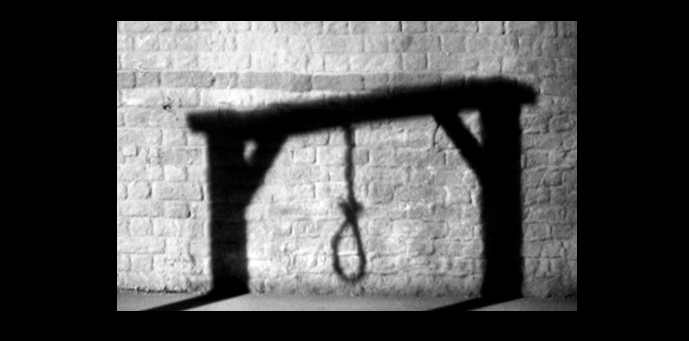How The Death Penalty Is Affecting Inmates Across The World

NEW DELHI: The Death Penalty is one of the most widely discussed and debated topics amongst legal scholars in India and across the world. In India, it is awarded for the rarest of rare cases where the crime committed is heinous.
“In 2015 governments continued relentlessly to deprive people of their lives on the false premise that the death penalty would make us safer.” said Salil Shetty, Amnesty International’s Secretary General.
In 2015 alone, more than 1600 prisoners were executed around the world, which is 54% more than executions recorded in the previous year, an Amnesty International report revealed. Alarmingly, almost 89% of these executions happened in three countries - Iran, Pakistan and Saudi Arabia.
More than 300 people were executed in Pakistan in 2015 after it lifted a moratorium on civilian executions back in December 2014. It was put in place in 2008. The attacks in a school in Peshawar had provoked the government to lift the moratorium.
According to Justice Project Pakistan, a human rights law firm based in Lahore, there are over 8000 death row inmates in Pakistan and more than 400 have been executed since December 2014. Moreover, there are over 2000 Pakistani inmates in Saudi jails.
“My 22 years on Pakistan’s death row could end this week. What purpose will my execution serve?” asked Aftab Bahadur, who was executed in early hours of June 10, 2015. Aftab was 15 when he was charged of committing murder. The police demanded a bribe of 50,000 rupees to let him go, but being a plumber’s apprentice, he could not pay, Aftab later revealed.
Aftab was innocent, as was later indicated by the statements made by the ‘eyewitness’, Ghulam. He stated that he was forced by the police to say that he had seen Aftab commit murder. Ghulam Mustafa’s life was spared.
Although the actual number of executions are way below the number of death row inmates, death penalty is still a very common punishment in India. The Death Penalty India Report, prepared by NLU-D, shows that 59 sections across 18 central legislations in India allow for the death penalty as a punishment, of which 12 sections are under the Indian Penal Code, 1860. The report further adds that out of the 270 death row inmates who spoke about their experience in police custody, 80% of them admitted to have suffered custodial violence.
Death Penalty, in India, is awarded for the ‘rarest of rare’ cases, as decided in the case between Bachan Singh v The State of Punjab. It was upheld by the Supreme Court in 2008 in Prajeet Kumar Singh v State of Bihar where it held that when the “collective conscience of the community is so shocked that it will expect the holders of the judicial power to inflict death penalty.” Another landmark judgment was delivered in Mithu v State of Punjab in which the supreme court held that ‘Mandatory Death Penalty is unconstitutional’ and violated the fundamental rights of human citizens.
For all civilian cases, the court orders the death penalty to be executed by hanging the inmate until death. However, the Army Act, 1950, under section 166 states that ‘offender shall suffer death by being hanged by the neck until he be dead, or shall suffer death by being shot to death.’
According to Death Penalty Project, between 1954 and 1963, India executed around 140 prisoners per year. However, that rate dropped to around 1 execution per year between 1996 and 2000.
The Death Penalty India Report, released by the Center of Death Penalty, NLU-D highlights that there were around 385 death row inmates in India during the course of the project between July 2013 to January 2015. Out of the 385 death row inmates 242 were first time offenders and the researchers could interview only 373 inmates. Out of them, 76% (279 prisoners) of prisoners sentenced to death in India belong to backward classes and religious minorities and all 12 female prisoners belong to backward classes and religious minorities. 31 prisoners were sentenced to death for terror offences. 61.6% of the prisoners did not complete school.
The report further suggested that over 60% of the prisoners appointed private legal representation at the trial court and High Court. It was also observed that prisoners switched from private legal representation at the trial court to legal aid at the High Court as they could no longer bear the ever increasing expenses of appointing private lawyers. .
Alternatively, there were also families who moved to private representation at the High Court from legal aid lawyers at the trial court owing to unsatisfactory and poor performance or demands for money by the legal aid lawyers.
Due to their economic vulnerability and instability, the prisoner or their family were able to pay very little to their private lawyers which translated into a complete lack of engagement with the prisoner.
Although death penalty executions spiked in 2015, a few countries abolished it completely. Four countries abolished the death penalty for all crimes – the highest number to do so in the space of one year for almost a decade. Madagascar, Fiji, the South American state of Suriname wiped death penalty from its law books. In November, Congo introduced a new Constitution that abolished death penalty once and for all, an amnesty international report stated.
Mongolia also followed suit and adopted a new Criminal Code which abolished death penalty in September 2016. In the US, Pennsylvania abolished death penalty for all crimes. 19 states in the US have completely abolished death penalty. A total of 102 countries have abolished death penalty by amending their constitution. Many more countries have abolished it in practice.



